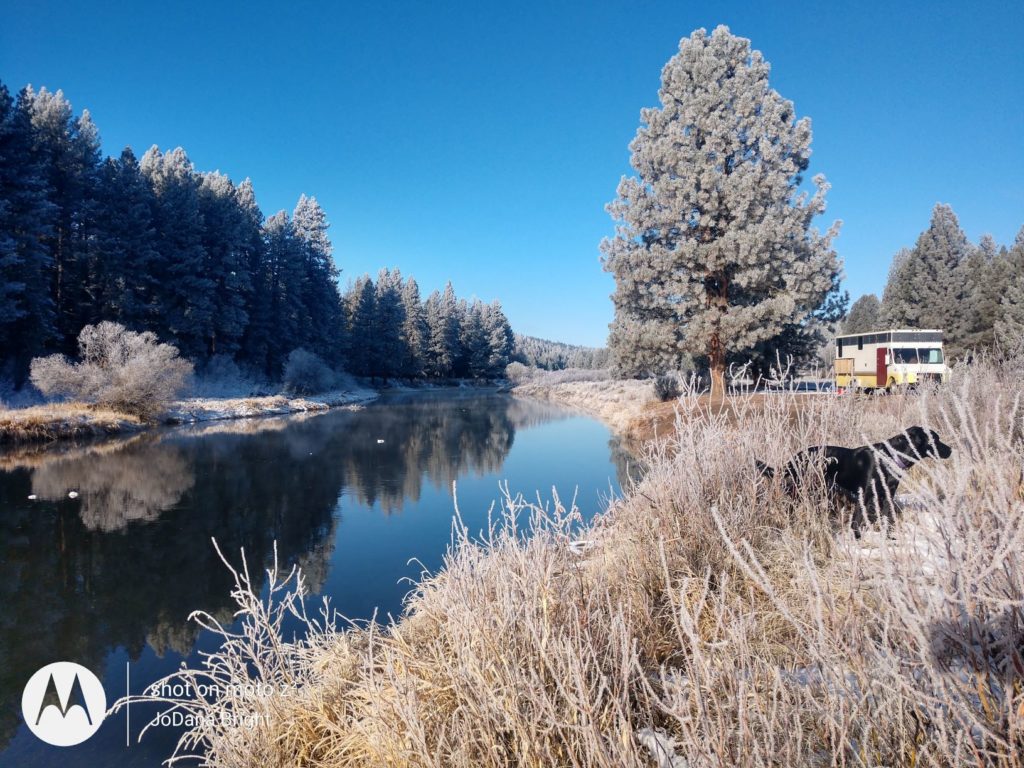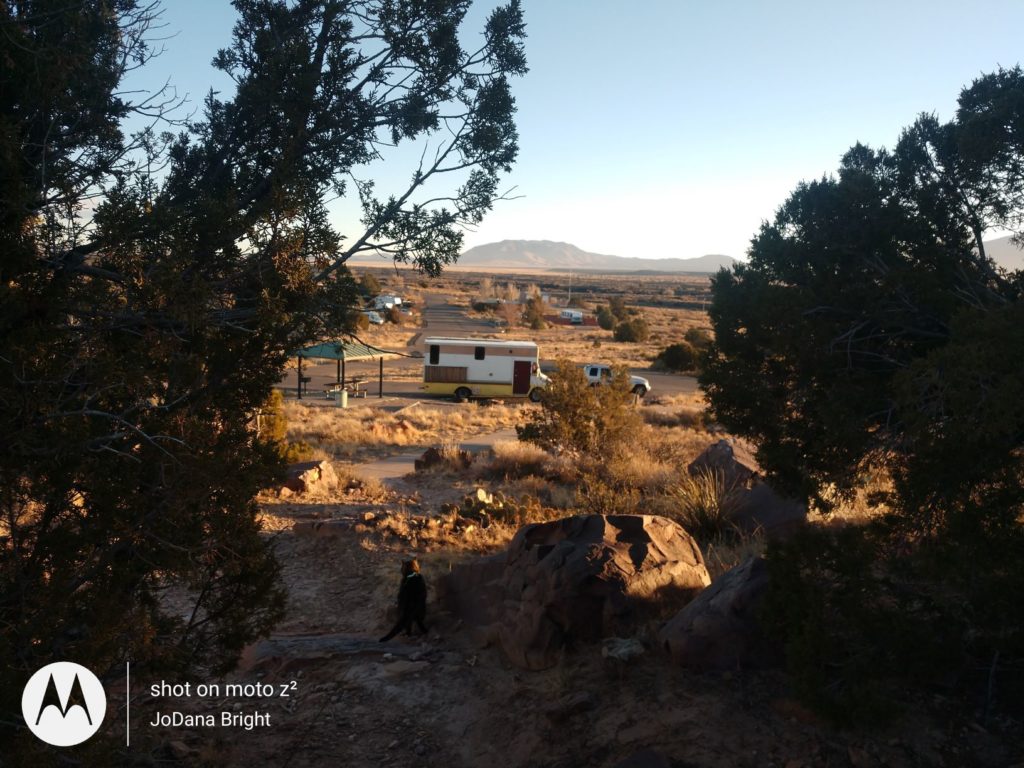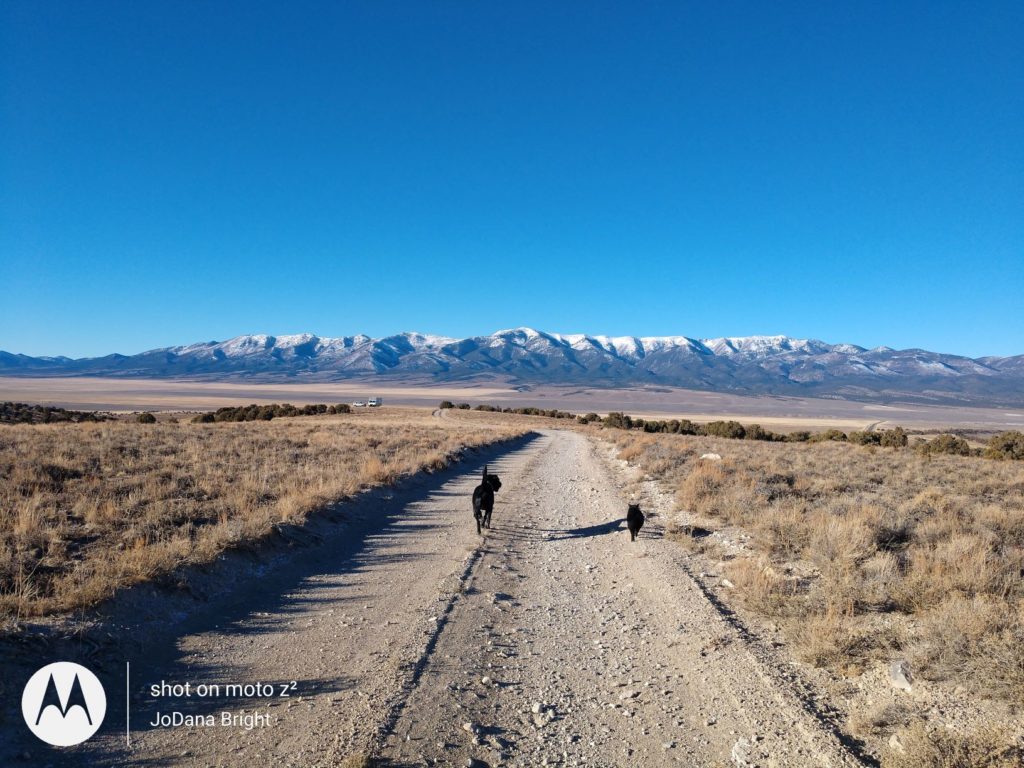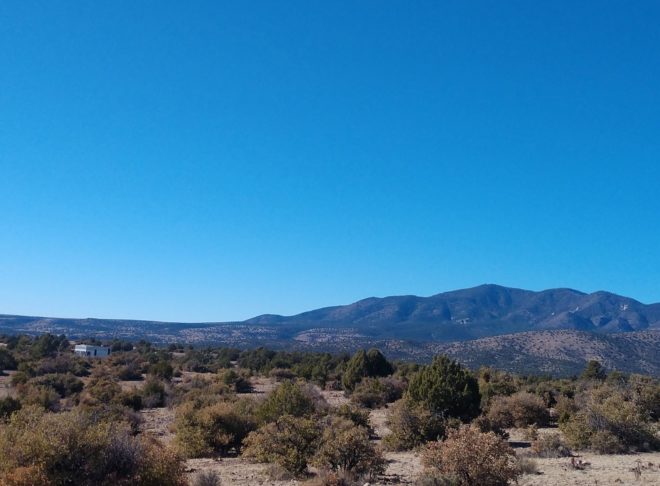How we find boondocking treasures
We’ve lived in Moose, our custom van conversion, for a year now (April 2020-2021), and have been full-time Nomads for sixth months. (We consider our full-time start date when we left our home region of the Pacific Northwest in November 2020, although we had several months of “test runs” in our native Oregon).
In that time we have traveled in twelve states and have stayed at paid campgrounds a total of three times. Not bad.
Our preference is to boondock on public lands, whether US Forest Service or Bureau of Land Management (BLM), and sometimes state managed lands. We’ve seen some really beautiful places in the western states this way.

We’ve discovered that each state or region kind of has its own quirks and there’s a constant learning curve, but we’ve discovered what works for us so far and, perhaps, this will help you if you are wanting to camp on the cheap.
Our Criteria
Moose is pretty well self-contained and we can be away from services for up to a month (unless it’s super cold and we only have a week of fuel for our diesel heater – on the list of things to change). Since we don’t need hookups, the major features we look for in a site are:
- Accessible roads – which honestly means different things to different Nomads. In our case, accessible can include pretty rough gravel and dirt roads with our main concern being the steepness of the road.
- Cell signal – since we both work remotely, having a reasonable cell signal is important. In a pinch, as long as we can reasonably get to a spot with strong enough signal for checking emails, return calls, upload files, etc, we can function for a few days in a dead zone.
- Shade – We rely on our solar panels for 90% of our power needs, so getting good sun exposure is very important. We look for sites that are unshaded for a good portion of the day.
- Level-ish – as we don’t have leveling jacks, we use leveling blocks, that I refer to as Legos™, to get us level within reason.
Where Are We Going?
I start with a couple of sites or apps that give me a general idea where to focus. Often near developed campgrounds on public land there are also areas of dispersed camping nearby. I start by checking out where along our route developed camping areas are.
FreeCampsites.net – Shows paid and free camping areas. Reviews and coordinates are super helpful.
Campendium – This has a free feature as well as a paid version.
The Dyrt – This app seems to be the go to for a lot of people. The reason is that it has a lot of information. There’s a free version and a paid version that gives you off-line options. What I like about The Dyrt is that it gives me an idea of the areas where people generally camp.
I use these to zero in on two or three possible areas

We Prefer the Road Less Traveled
Our particular travel style is to avoid highly populated areas and full campgrounds. Partly because we like being remote, but another key is the animals we travel with. We have adventure kitties that love to get outside, chase leaves and bugs, climb trees, and go for hikes with us, but they’re cats and are skittish by nature and as such we try to avoid situations where they’ll be spooked by traffic or strangers, and of course we want our dogs to be able to play freely without being tied up all the time. (see our post on Traveling With Critters for more information on the subject of pets).
FreeRoam – This is one of my favorite apps. It is entirely user driven and I appreciate the reviews and extra tips when getting to an area. It’s doesn’t have the location database that The Dyrt has, but what I appreciate most about FreeRoam is the information layers. I can explore topography, cell signal (although on the edges of coverage areas it’s a bit iffy), and layer USFS MVUM – Multi Vehicle Use Maps – as well as things like wildfire smoke hazards. In FreeRoam I can easily tell elevation and coordinates, zoom in to the satellite view and pinpoint our next campsite.
Avenza – Calvin downloads the MVUMs for any area we’re heading towards so even if we lose signal he can still navigate us toward the area we’re wanting. The Avenza maps are crisp, allow for GPS locating,
BLM and USFS and state parks and wildlife websites – The best, albeit not always well-organized, information about an area are the websites of the agencies that manage them. USFS has MVUM’s on their sites plus they highlight particular features like parks, museums, natural history features, etc. BLM information is, in my experience, less helpful, but there are occasional tidbits. State parks and wildlife agency websites rank up there with USFS as far as useful information. We are particularly fond of state fishing lakes (Thank you, Kansas) and Wildlife Management Areas (Looking at you, Texas).
Paid Memberships
Harvest Host – We have a one year membership but have only used this once, when we first go to Texas, which is graduate level boondocking! We had a wonderful experience and will use it again, but we don’t use it often because we generally are not looking to be in a place for one night only. Plus, we travel with a zoo and not all are quite this pet friendly.
Boondockers Welcome – We have really enjoyed our Boondockers Welcome experience and have made great friends, and added a dog to our zoo. We appreciate that most hosts RV as well and know the issues that come with that lifestyle. We’ve also been thankful for the flexibility in length-of-stay.
Escapees – We are a split-domocile family: my state of residency is Oregon, Calvin switched his to Texas, in part so we’d have a mailing service through Escapees. We’re still new to this outfit, but are looking forward to making connections with other RVers at some of the gatherings this summer.

In Conclusion
Boondocking is very easy on the budget, especially in the Western States where public lands are abundant, because you can stay up to two weeks in many places. Not moving as frequently saves fuel big time! However, taking the road less traveled means much more time is devoted to research. It can take several hours to find a suitable spot, and that’s before we even start driving. Once we get to our location, there’s still some scoping out to do to find the right one for us. And, honestly, sometimes our first choice is a bust and we have to move again. But, we’ve stayed in some absolutely amazing places. The key – always be flexible and don’t stress about it.
